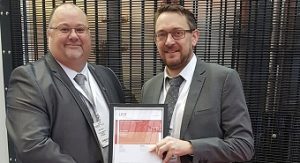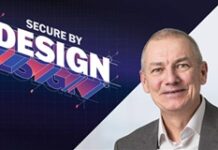
A high-security fence for rail and other critical national infrastructure applications that resists for more than five minutes sustained attack with specialist power tools has been developed by steel mesh fencing manufacturer Zaun. Zaun has received a revised Certificate of Product Approval from the Loss Prevention Certification Board (LPCB) to include its brand new CorruSec SR3 approved to Security Rating 3.
The fencing system incorporates corrugated HiSec 3-5-10 mesh sandwiched between further panels of HiSec 3-5-10, a special welded steel wire fence panel similar to the type of mesh usually used for prison fencing, whose name is derived from its mesh size – 3″ × 0.5″ × 10 gauge. The original concept was the idea of Zaun co-founder and director Alastair Henman – and has been developed by research and development manager Adam Christie.
Christie explains: “Alastair conceived the design by looking at the construction of cardboard, in particular the corrugated kind, and how the corrugated element created a much stronger three-dimensional material.”
CorruSec SR3 has been subjected to sustained attack by testers from the Buildings Research Establishment (BRE) wielding a range of hand and power tools, yet they could not breach the CorruSec SR3 in less than five minutes. The fencing system is manufactured to BS1722 Part 14 and is approved at heights from 2.4 to 6m above the ground, in ground or base plated options.
Each individual panel features a 76.2mm x 12.7mm mesh configuration with 3mm horizontal and vertical wires. The corrugated section is pressed to approximately 100mm in depth. All three layers are bolted together using bolts fixed into place in a grid pattern throughout the combined fence panel. CorruSec SR3 provides good through visibility for use with CCTV cameras, while security toppings can be added to suit. As well as rail applications, SR3 fencing is ideal for protecting assets at water utilities, oil and gas compounds, data centres and other sites of critical national importance.











